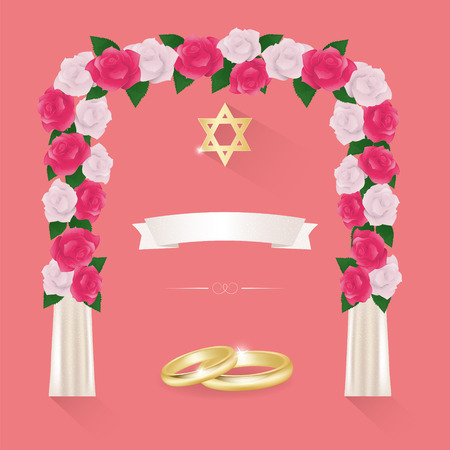So you’ve been invited to a Jewish wedding? Mazel Tov! Let’s take a quick look at what to expect before you head out to celebrate the special day with the married couple.
 The first thing to find out is what type of Jewish wedding you are attending – Reformed or Orthodox. Reformed Jewish weddings are more contemporary, while Orthodox weddings tend to skew more conservatively. For Orthodox Jewish weddings, the men and women are on opposite sides of the room and it is respectful to have your head covered. When it comes to dress, it is better to dress on the conservative side. For women, this means longer dresses and covered shoulders.
The first thing to find out is what type of Jewish wedding you are attending – Reformed or Orthodox. Reformed Jewish weddings are more contemporary, while Orthodox weddings tend to skew more conservatively. For Orthodox Jewish weddings, the men and women are on opposite sides of the room and it is respectful to have your head covered. When it comes to dress, it is better to dress on the conservative side. For women, this means longer dresses and covered shoulders.
Prior to the ceremony, there may be a time to greet the happy couple. This is referred to a kabbalat panim. If there is a kabbalat panim planned, there will often be two times listed on the invitation. If there is only one start time, that will usually indicate the start time for the ceremony. Like every other wedding, try to arrive ahead of time. Normally, there is no special seating arrangement. But some families prefer having men on one side and women on the other.
There may also be a reading of the ketubah – the official marriage document in Judaism – during the kabbalat panim. This document is signed before the wedding ceremony, though it may also be completed in private with the rabbi before the ceremony. After the ceremony, the ketubah may also be placed on display as many ketubahs are ornately decorated and considered to be a piece of art.
During the actual ceremony, the parents of both the bride and the groom escort their child down the aisle to the chuppah, or marriage canopy. In the middle of the ceremony, the bride and the groom will circle one another. This symbolizes the protection from the groom from other women’s influences and the binding of the bride to her new family. At the end of the ceremony, the seven blessings or sheva berakhot will be said over a glass of wine. Depending on the type of ceremony, these could be said by honored guests or the Rabbi.
The most well-known part of the ceremony is the end – the traditional breaking of the glass. Breaking the glass symbolizes the destruction of the First Temple in Jerusalem and is meant as a reminder that even during happy times there is still pain and that relationships can be fragile and easily broken without attention and care.
Do you live in South Florida and are looking for a rabbi to officiate your Jewish wedding? Still have questions about Jewish ceremonies? Call Rabbi Richard Polirer today at 954-234-4153 to learn more.